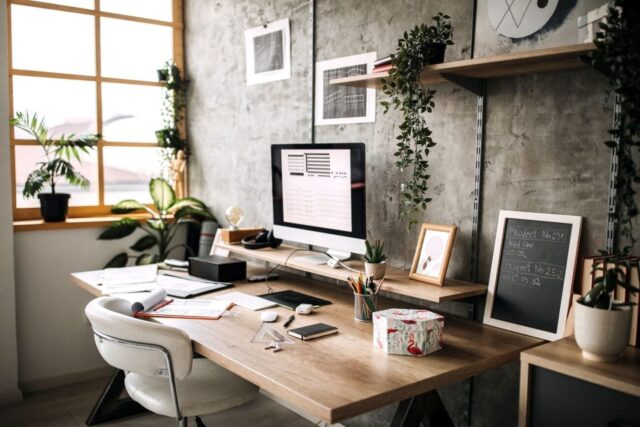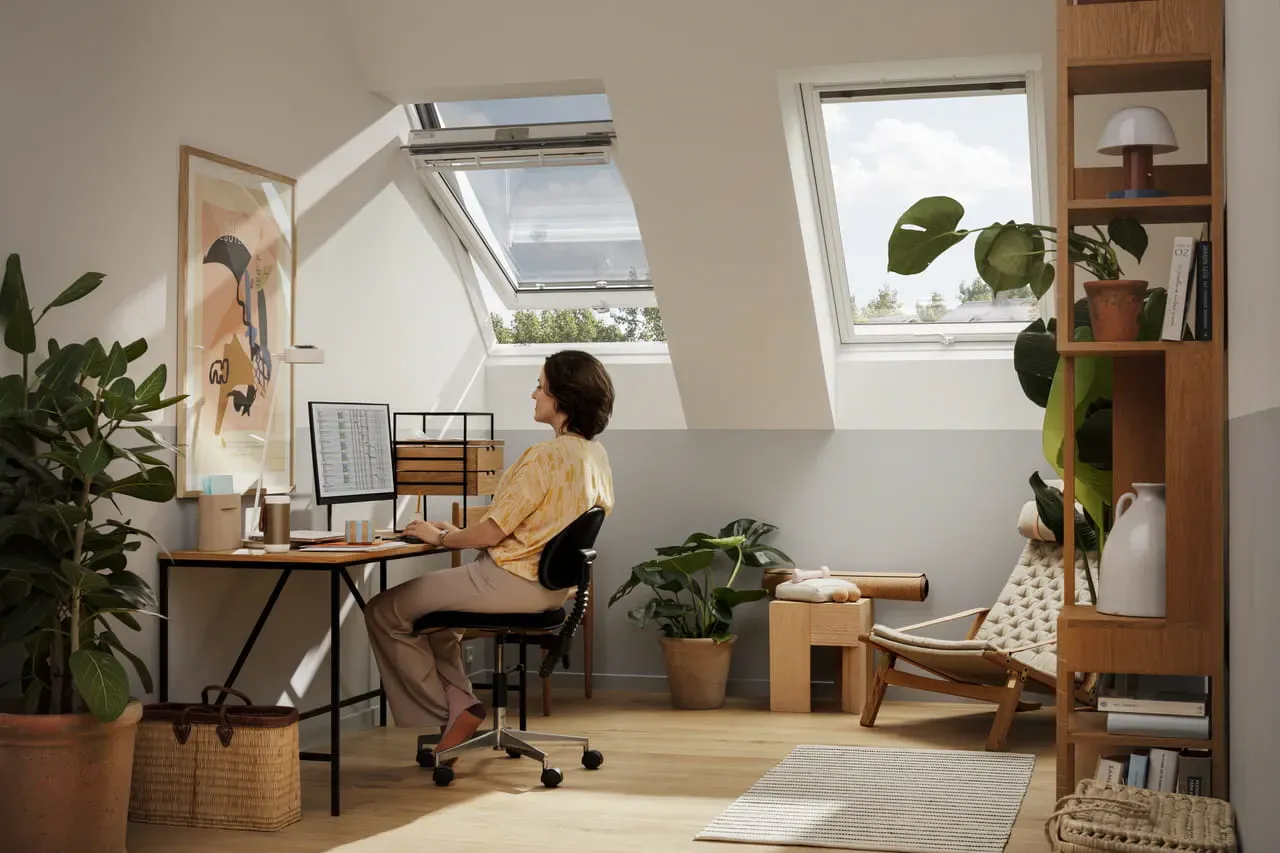
Not everyone has a full extra room for an office. Most of us are making do with a nook in the bedroom, a slice of the living room, or even a hallway that gets just enough light to feel like a space. And that’s okay. You don’t need a big setup to do big things—you just need to make that corner work for you. Once you do, it’s like your entire day gets a little lighter, your work gets easier, and your space finally feels like yours.
It’s not about copying some magazine-perfect desk setup. It’s about building something that helps you feel clear-headed, productive, and calm. Even if you’ve only got a few feet to spare, you can turn it into something that feels amazing to walk into every morning. Let’s talk about how.
Start with the Light and Work Around It
The fastest way to make a corner feel like its own little world is by paying attention to the light. If there’s a window nearby, take full advantage. A spot with natural light can lift your mood and help you focus longer without that sluggish, mid-afternoon slump.
But even if your corner’s tucked into a darker part of the house, you’re not stuck with shadows. A good desk lamp—not too harsh, not too dim—can give your workspace a warm, cozy glow. Try placing it so it lights your screen and keyboard but doesn’t bounce into your eyes. Soft, warm-toned bulbs usually feel better than cooler white ones, especially during long work days.
The rest of the lighting in your space matters too. If your room feels dim overall, your little work nook won’t feel very inviting. Adding a floor lamp nearby, or even some subtle string lights along the edge of a shelf, can make a huge difference. Once the light feels right, everything else starts falling into place.
Invest in a Signal That Works for You

There’s nothing worse than getting kicked off a video call or watching your files take forever to load because your internet connection can’t handle your setup. If your spare corner is far from your router, chances are your signal’s weak there—and that slow drag starts to wear on you.
What changes everything is a Wi-Fi 6 mesh system. Think of it like a team of mini routers that spread your signal more evenly through your home. You can place one right near your workspace, and it’ll make your internet feel brand new. Speeds get faster. Video calls get clearer. Uploads stop lagging. Suddenly, you’re not crossing your fingers every time you join a meeting.
Even better, it’s not just about convenience. A stronger, more reliable internet gives you a real sense of control over your day. You’re not waiting on anything. You’re not frustrated by lag or frozen screens. You’re able to focus fully on your work—and it shows. If you only upgrade one part of your setup, let it be this.
Make Your Seat Support You, Not Punish You
Most of us didn’t buy fancy office chairs when we first started working from home. We grabbed whatever was available—kitchen chairs, old stools, maybe even the couch, with a laptop on our knees. It worked for a while. But now? You feel it. In your back, your shoulders, your neck.
The chair you sit in for hours every day needs to be something you can relax into and sit upright in. That doesn’t mean spending a fortune. Even a simple, supportive chair with good lower-back support and adjustable height can feel like a game-changer.
Some people swear by footrests or cushions, but it depends on your height and how your desk is set up. Sit down. Pay attention. Are your feet flat on the ground? Are your elbows near a 90-degree angle when you type? Do you lean forward a lot? The more aligned you are, the less exhausted you’ll feel by the end of the day. Your body deserves to be cared for, even in small ways.
Give Your Brain Visual Cues That Say “Work Happens Here”

It’s easy to blur the lines between work and life when your office is part of a shared space. That’s where visual cues can help a ton. You’re training your brain, gently, to know when it’s time to focus and when it’s time to relax.
The first step is to define the area. A rug under your desk, a simple folding screen, or even just rearranging furniture can give that corner its own little identity. Add a plant, a calendar, or a piece of art that helps you feel motivated but not overstimulated. Try not to clutter the wall with too many things—leave space to breathe.
Keeping your workspace clean and uncluttered makes your day run smoother. You’ll feel calmer when you sit down, and your attention won’t bounce between piles of paper and half-finished to-do lists. When your eyes can rest, your mind can too. That’s a quiet form of support that builds up over time.
Set a Rhythm That Makes You Want to Stay There
Even the best-looking workspaces don’t matter if they don’t feel good. This part is all about rhythm—the way your day flows while you’re in that corner. Do you get up and stretch once in a while? Do you take a minute to breathe before your next meeting? Do you sip your favorite drink while checking emails in the morning?
These tiny rituals add warmth and ease to your workday. You’re not a machine, and your corner shouldn’t feel like a cage. Maybe you light a candle before a writing sprint. Maybe you play soft background music to keep you steady. Even having a small drawer stocked with your favorite pens, sticky notes, or a little snack can help you settle into work without resistance.
A comfortable rhythm doesn’t just make you feel good. It makes you more productive. It boosts the efficiency of remote workers in a very real way—less burnout, more clarity, and fewer distractions pulling you away. When your workspace helps you feel grounded, your work follows suit.
Let the Personality of the Space Reflect Yours

It’s easy to think your desk setup has to look a certain way—sleek, neutral, minimalist. But that only works if you love it. If you’re more energized by color, use it. If you feel happiest with a little clutter or some quirky knickknacks nearby, lean into that.
Your work-from-home space is not a stage set. It’s a tool. And tools work better when they fit the person using them. Some people like clean lines and hidden wires. Others want post-it notes everywhere and a mood board hanging above the monitor. Both are valid. Both can be beautiful.
Even if you share your space with family, pets, or roommates, you can still create something that feels personal. Maybe it’s a drawer that holds your favorite notebooks. Maybe it’s a mug that always lives on your desk. Tiny touches remind you that this space is yours—and that can carry a lot of weight on long days.
Your Space, Your Energy
You don’t need a home office to feel at home in your work. That spare corner you’ve been overlooking? It has more potential than you think. With light, comfort, strong internet, and a few thoughtful touches, it becomes more than just a place to sit. It becomes a part of your day that supports you—and maybe even inspires you a little. Sometimes, the smallest spaces end up making the biggest difference.







